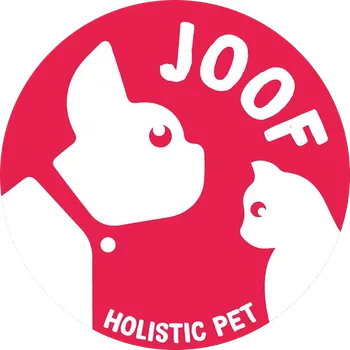4-Legger Quick Guide to Dog Shampooo Ingredients
Learn About Ingredients to Find a Safe and Non-Toxic Organic Dog Shampoo

Unless your dog has allergies or itchy skin, you may not see a dramatic change in the health of your dog's skin and coat from one bath to the next. If you consider your dog's exposure to toxic ingredients over the long term it DOES add up - directly impacting the long term health of your dog.
Important Facts About Dog Grooming Products:
- Dog grooming products are manufactured with a lot of different ingredients, some of which are known or suspected carcinogens, toxic, known to disrupt the endocrine system, or cause skin irritation.
- The pet grooming industry is not regulated by the FDA.
- There are no regulations in the pet grooming industry for purity of ingredients.
- Ingredients are not tested to determine if they are safe and free from contaminants that have known links to health issues.
- Your dog's skin has less layers than your skin.
- There are no standards for integrity in the marketing of dog grooming products.
- It is common to see products marketed as "all natural and organic" to find the manufacturer has mixed a few "good" ingredients with "bad" ingredients and marketed only the good ingredients.
- Ranking individual ingredients is hard. An ingredient may not be "bad" but may have contaminants from the manufacturing process. We've given it our best shot erring on the side of caution. It goes without saying manufacturers who use these ingredients will not agree with our opinions. Our primary logic when ranking an ingredient is: "How good do I feel using that ingredient on my dog?" and "How friendly is it to our planet?"
When you know the potential risks of ingredients and how they can affect the health of your dog, you can make informed buying decisions to avoid products that aren't safe for you or your fur family! We've made it easy by giving you a safety symbol, a natural or synthetic symbol and a description.
UPDATE: The pet shampoo ingredient database has grown so big that we've created a stand-alone site for it! We've kept the original database below as a quick guide. You'll find a lot more ingredients in the new database! Please visit https://www.petshampooingredientdatabase.com

Aloe Vera
Packed with polysaccharides and flavonoids with high antioxidant activities and antibacterial and anti-inflammatory properties. Aloe helps to improve the flow of blood to damaged areas, improving collagen formation while keeping the dry skin moist and protected. We use aloe in all of our organic dog shampoo formulations! SAFE & NATURAL.
Artificial Colors
 Artificial colors are synthetic dyes generally produced from petroleum. While the dyes may be FDA-approved for use in cosmetics, they do have linkages to organ system toxicity (non-reproductive) and are known to bioaccumulate (can build up in the system). If that doesn't convince you to avoid it, FD&C and D&C colors are bituminous coal derivatives that are continuously tested on animals due to their carcinogenic properties. VERY BAD & SYNTHETIC.
Artificial colors are synthetic dyes generally produced from petroleum. While the dyes may be FDA-approved for use in cosmetics, they do have linkages to organ system toxicity (non-reproductive) and are known to bioaccumulate (can build up in the system). If that doesn't convince you to avoid it, FD&C and D&C colors are bituminous coal derivatives that are continuously tested on animals due to their carcinogenic properties. VERY BAD & SYNTHETIC.
Allantoin
 A nitrogen rich compound that promotes the healing of skin. It is synthetic or derived from the urine of animals or plants (like Comfrey). You'll need to verify the source of this ingredient given the high number of synthetics. NOT BAD but SYNTHETIC.
A nitrogen rich compound that promotes the healing of skin. It is synthetic or derived from the urine of animals or plants (like Comfrey). You'll need to verify the source of this ingredient given the high number of synthetics. NOT BAD but SYNTHETIC.
Note: Allantoin is considered a drug and should be regulated by the FDA.
ALES or ALS
 See Ammonium Laureth Sulfate (below). VERY BAD & SYNTHETIC.
See Ammonium Laureth Sulfate (below). VERY BAD & SYNTHETIC.
Ammonium Lauryl Sulfate
 A synthetic foaming agent that has links to organ system toxicity. BAD & SYNTHETIC.
A synthetic foaming agent that has links to organ system toxicity. BAD & SYNTHETIC.
Ammonium Laureth Sulfate (ALES or ALS)
 A synthetic surfactant (cleaning and foaming agent) that contains PEG (polyethylene glycol). May be contaminated with 1,4-dioxane. VERY BAD & SYNTHETIC.
A synthetic surfactant (cleaning and foaming agent) that contains PEG (polyethylene glycol). May be contaminated with 1,4-dioxane. VERY BAD & SYNTHETIC.
Babassuamidopropyl betaine
 A salt used to boost foam and help condition. SAFE but SYNTHETHIC.
A salt used to boost foam and help condition. SAFE but SYNTHETHIC.
Balsam Fir Essential Oil (Abies balsamea)

Balsam is a natural stimulant, antiseptic and analgesic. It is great for muscle and joint conditions, respiratory conditions, inflammation and will help to naturally reduce cortisol levels. It is generally non-toxic, non-irritant, and non-sensitizing. SAFE & NATURAL.
As with all essential oils, using a high grade essential oil that has been naturally extracted is imperative for the health and safety of your pet!
Benzyl benzoate

A synthetic chemical used as a fragrance ingredient and preservative. It is also considered an over the counter drug used as a scabies or lice treatment. It is linked to allergies, skin irritation, and hormone disruption. BAD & SYNTHETIC.
Beeswax - Organic

Organic beeswax is superior to non-organic beeswax as the bees that produce the wax have a forage zone free of synthetic chemicals and GMO crops. It is truly exceptional! Safe and non-toxic. SAFE & NATURAL.
Botanical Extracts

While botanical extracts sounds like they are single ingredient extracts, that may not be the case. Take for example a cherry botanical extract - it may be extracted into parabens or it may be extracted into glycerine and water. Since there is no way to know, we've added it as a caution but noted they are likely natural. NOT BAD & NATURAL.
Note: If it is mixed with a synthetic, the safety of the ingredient can dramatically change.
Calendula

Calendula is excellent for cuts, scrapes, insect bites, and dry itchy skin! It increases the flow of blood and oxygen to that area to accelerate the healing process. It is good stuff! SAFE & NATURAL.
Castile Soap

Castile soap is the most gentle all natural cleaning solution available on the market. It is made with saponified oils! SAFE & NATURAL
Carbomer

This ingredient is used to create a gel like consistency - increase viscosity. Generally thought of as safe but may cause minor skin irritation. NOT BAD but SYNTHETIC.
Cedarwood Essential Oil

Cedarwood is a natural pest repellent with natural properties to improve the appearance of your dog's skin. SAFE & NATURAL.
Cetearyl Isononanoate

An ester of Cetearyl Alcohol and a branched chain nonanoicacid used as a skin and hair conditioner. Used at less than 12% in a formulation it is less likely to cause skin irritation. We gave it a neutral rating as we don't know the concentration and more research is needed on this ingredient for long term impacts. NOT BAD but SYNTHETIC.
Cetyl Alcohol

May be used in a number of applications - from fragrance to boosting foam or a thickener. It has links to organ system toxicity and is not friendly to the environment (ecotoxicology). Can have a plant or animal origin. BAD & SYNTHETIC.
Chlorhexidine gluconate

An antimicrobial preservative known to cause skin and eye irritation and allergen. BAD & SYNTHETIC.
Citric acid

Typically used in dog grooming products to adjust the pH of the product closer to the pH of your dog's eyes (pH 7 - neutral) to reduct eye irritation so the manufacturer can claim "tear free". Unfortunately, these same shampoos use ingredients that you would not want on your dog's eyes. So, yes they may be tear free, but the product is not safe and non-toxic! SAFE & NATURAL.
As a note, your dog's skin is better served by a more alkaline pH and you being careful around their eyes. Also, some dogs may have skin sensitivity to citric acid although rare.
Cocamide DEA

A foaming agent that has links to organ system toxicity and contamination concerns. VERY BAD & SYNTHETIC.
Cocamide MEA

A foam producer that started as a coconut and has been chemically altered into a moderate cancer causer, hormone and thyroid disruptor and an organ toxin. VERY BAD & SYNTHETIC.
Cocamidopropyl betaine

A synthetic surfactant associated with irritation & allergic contact dermatitis. Reactions could be due to the ingredient itself or impurities. Nitrosamines (a common contaminant) are known to cause cancer. VERY BAD & SYNTHETIC.
Cocamidopropyl hydroxysultaine

A a plant derived synthetic hair conditioning agent and foam booster. It is a relatively new ingredient that may have links to skin allergies but appears with the limited data available to be relatively safe. NOT BAD but SYNTHETIC.
Coco-glucoside

Is a synthetic used as a foaming, cleansing, conditioning, and thickening agent. It made from reaction of coconut oil fatty alcohols and fruit sugar (glucose). While synthetic is it considered safe with minimal links to allergies. SAFE but SYNTHETIC.
Coconut Glucose

See coco-glucoside (above). SAFE but SYNTHETIC.
Coconut Oil

Not all coconut oil is the same. 4-Legger uses USDA certified organic coconut oil - a natural cleaner to improve your dog's skin. SAFE & NATURAL.
Decyl Glucoside

A newer ingredient that is a glucose based surfactant. While there isn't a lot of data yet about this ingredient general indications are that it appears to be safe and non-toxic but that it can cause allergic contact dermatitis. SAFE but SYNTHETIC.
Dimethicone

A silicon based ingredient that helps to provide skin conditioning. It is linked to organ system toxicity and is not planet friendly (ecotoxicology). BAD & SYNTHETIC.
Disodium EDTA

Used to help control viscosity. It is not a bad ingredient but it does enhance skin absorption. NOT BAD but SYNTHETIC.
DMDM Hydantoin

Used as a preservative that slowly releases small amounts of antimicrobial formaldehyde over time. Many dogs have or can develop formaldehyde allergies/sensitivities. It also may cause skin or eye irritation. Formaldehyde is linked to cancer. VERY BAD & SYNTHETIC.
Doazolidinyl urea

An antimicrobial preservative that works by forming formaldehyde. Many dogs have or can develop formaldehyde allergies/sensitivities. Formaldehyde is linked to cancer. VERY BAD & SYNTHETIC.
Tetrasodium EDTA

Used to help control viscosity, tetrasodium EDTA has links to organ system toxicity and enhances enhance skin absorption. BAD & SYNTHETIC.
Ethylhexylgl Glycerin

A weak preservative and skin conditioner. While no shampoo should be used around the eyes, this ingredient does have links to eye toxicity making it very important it does not come into contact with eyes. BAD & SYNTHETIC.
Eucalyptus Essential Oil

Naturally helps increase the flow of blood to the skin with antibacterial, anti-inflammatory, and antiseptic, antiviral and deodorizing properties. SAFE & NATURAL.
Formaldehyde

A known cancer causing preservative that is also linked with allergies and skin sensitivities. Slow releasing formaldehyde preservatives include Diazolidinyl urea, Imidazolidinyl urea, DMDM hydantoin, and Quaternium-15. VERY BAD & SYNTHETIC.
Fragrance

A "catch all" for added scent that generally means it has a lot of ingredients linked to allergies and immune issues. Most have links to organ system toxicity and are not friendly to the planet (ecotoxicology). VERY BAD & SYNTHETIC.
Vegetable Glycerine

A by-product of the process of saponification, it is a natural humectant. SAFE & NATURAL.
Glyceryl sterate

Used as a skin conditioner and thickener to retain moisture and hydration. SAFE & NATURAL.
Guar Gum

Made from guar beans it acts as a natural conditioner and humectant (holds on to moisture)! SAFE & NATURAL.
Hemp Oil

A powerful antioxidant and anti-inflammatory that works to improve your dog's skin. SAFE & NATURAL.
Imidazolindinyl urea

Used as a preservative that slowly releases small amounts of antimicrobial formaldehyde over time. Many dogs have or can develop formaldehyde allergies/sensitivities. It also may cause skin or eye irritation. Formaldehyde is linked to cancer. VERY BAD & SYNTHETIC.
Isopropyl alcohol

A mild antiseptic, cleaner and disinfectant that is VERY drying to your dog's skin causing irritation to your dog's skin. It can affect your dog's nervous system and cause organ system toxicity. Many "dry" dog shampoos may use alcohol to quickly "dry" your dog. Yikes! VERY BAD & SYNTHETIC.
Jojoba Oil

Has natural antibacterials and helps to rejuvenate and restore dry skin while the anti-inflammatories reduce swelling and redness associated with skin conditions. SAFE & NATURAL.
Lavender Essential Oil

A true gift from nature, lavender is an analgesic, antimicrobial, anti-inflammatory, insecticide, rubefacient, stimulant, tonic, deodorant, and more! SAFE & NATURAL.
Lemongrass Essential Oil

Not only does it smell amazing and "clean" it works to improve your dog's skin, is a natural antibacterial, anti-fungal, and mosquito repellent! SAFE & NATURAL.
Lauramide DEA

A foam booster with links to organ system toxicity and contamination concerns by nitrosamines - with links to cancer. VERY BAD & SYNTHETIC.
Laurel Glucoside

A sugar and lipid based surfactant (cleaner) and conditioner and emulsifier. This ingredient has few dermatological issues and is safer than other synthetics. It has also been subject to recent animal safety testing. NOT BAD but SYNTHETIC.
Methylchloroisothiazolinone

A preservative linked to allergies and skin irritation. It is not planet friendly (ecotoxicology). There is some evidence that may link it to cancer. VERY BAD & SYNTHETIC.
Methylisothiazolinone

A preservative with links to neurotoxicity, skin irritation, and allergies. VERY BAD & SYNTHETIC.
Methylparaben

A preservative linked to endocrine disruption (think thyroid issues). VERY BAD & SYNTHETIC.
MEA - Monoethanolamine

A pH adjuster that has links to organ system toxicity and skin irritation. VERY BAD & SYNTHETIC.
MEA Lauryl Sulfate (Monoethanolamine Lauryl Sulfate)

A cleaning agent (surfactant) with strong possibilities of contamination by ethylene oxide or 1,4-dioxane with links to cancer. VERY BAD & SYNTHETIC.
Mineral Oil

Mineral oil is derived from petroleum used in fragrances and for conditioning of skin products. It blocks pores and does not let the skin breathe. It has links to organ system toxicity. VERY BAD & SYNTHETIC.
Oatmeal (Oat Milk)

A natural anti-inflammatory, anti-irritant, and moisturizing characteristics that can soothe, smooth, and nourish your dog's skin and coat. SAFE & NATURAL.
Olive Oil

Rich in vitamins, minerals, natural fatty acids, and antioxidants to nourish, rejuvenate, and guard your dog's skin. SAFE & NATURAL.
Panthenol

A form of Vitamin B5 it is used for skin conditioning and to control static. It has no links to toxicities. SAFE but SYNTHETIC.
Paraben

Parabens are a class of preservatives or fragrances that are not planet friendly (ecotoxic) with strong ties to hormone (endocrine system) disruption. VERY BAD & SYNTHETIC.
Peppermint Essential Oil

Works to balance the sebum on your dog's skin and coat while increasing the blood flow to the skin to heal and provide protection against bacteria and viruses. SAFE & NATURAL.
Petroleum Jelly

Derived from petroleum (not planet friendly - ecotoxic) with links to organ system toxicity with contamination concerns by PAHS - with links to endocrine disruption, cancer, bioaccumulation, and organ system toxicity. VERY BAD & SYNTHETIC.
Note: There are many different brands of petroleum jelly with a vast spectrum of ingredient purity. While we'd not use it on ourselves or our dogs, if you are going to use it, make sure you buy a reputable name brand.
Phenoxyethanol

A relatively new preservative. Let's first note that it is safer than some other preservatives like formaldehyde, paraben, and methylisothiazolinone preservatives. There is some evidence that it may cause skin irritation or allergies in some dogs and that it may have links to organ system toxicity. BAD & SYNTHETIC.
It is also is a sensitizer meaning your dog can develop an allergic reaction to it after using it for some time with no problems.
Note: This is a synthetic ingredient that is not allowed by Ecocert for use in natural or organic products. If the bottle says "natural" or "organic" and it also says "phenoxyethanol" you would be wise to avoid any products manufactured by this company.
Polyglyceryl-4 Oleate

We gave this ingredient a green rating but want to point out a caution. There are animal and petroleum sources so you will need to ask for the ingredient source wen you see this ingredient listed. SAFE but SYNTHETIC.
A synthetic combination of 4 glycerine molecules into 1 large molecule that makes it more moisturizing, added to a fatty acid under alkaline conditions - that joins the 2 chemicals into one new molecule.
It is generally regarded as a safe and effective moisturizer - certainly safer than the alternatives like polyethylene glycol (PEG) and triethanolamine (TEA). It is also approved to be used in ECOCERT certified organic products.
Polyethylene Glycol (PEG)

Works to hold on to moisture but has some links to organ system toxicity. Concerns with contamination by ethylene dioxide and 1,4-dioxane (both linked to cancer) from the manufacturing process. VERY BAD & SYNTHETIC.
Polysorbate

A surfactant and emulsifier that may have contamination concerns by ethylene dioxide and 1,4-dioxane (both linked to cancer) from the manufacturing process. Has possible linkages to organ system toxicity. VERY BAD & SYNTHETIC.
Potassium cocoate

Saponified coconut oil! Safe and non-toxic! SAFE & NATURAL.
Potassium olivate

Saponified olive oil! Safe and non-toxic! SAFE & NATURAL.
Potassium jojobate

Saponified jojoba oil! Safe and non-toxic! SAFE & NATURAL.
Proprietary Blend of Moisturizers or Conditioners

Don't fall for this marketing trick. If they aren't willing to tell you what is actually in the product you can rest assured it is ingredients you don't want on your dog! VERY BAD & SYNTHETIC.
Propylene Glycol

Used as a skin conditioner that can retain moisture but has links to skin irritation, organ system toxicity and can increase the skin's absorption. VERY BAD & SYNTHETIC.
Propyl Paraben

A preservative that can mimic estrogen and likely act as a hormone system disruptor (endocrine system). Also, not planet friendly. VERY BAD & SYNTHETIC.
Quaternium-15

Used as a preservative that slowly releases small amounts of antimicrobial formaldehyde over time. Many dogs have or can develop formaldehyde allergies/sensitivities. It also may cause skin or eye irritation. Formaldehyde is linked to cancer. VERY BAD & SYNTHETIC.
Rosemary

Rich in nutrients, rosemary, a known anti-inflammatory will improve circulation, aid in moisturizing dry skin, boost healing, and increase the natural shine and hydrated appearance of your dog's coat. SAFE & NATURAL.
Saint John's Wort

A natural anti-inflammatory, anti-fungal, antiseptic, astringent, antimicrobial and antioxidant that improves the health of your dog's skin. SAFE & NATURAL.
Saponified Organic Oils

Oils that have been converted to soap and glycerine - the highest grade of soap available! It is safe, non-toxic, mild, and gentle! SAFE & NATURAL.
Sea Salt

Exactly what it wounds like - salt from the sea, ocean, or salt water lake that has been dehydrated. SAFE & NATURAL.
Shea Butter

A vegetable oil obtained from the tree. Butyrospermum parkii used for skin conditioning. SAFE & NATURAL.
Sodium Bicarbonate

Baking soda is a salt used for deodorizing, pH adjusting, oral care, and more. SAFE & NATURAL.
Sodium cocoate

Saponified coconut oil. Safe and non-toxic! SAFE & NATURAL.
Sodium Cocoyl Isethionate

A relatively new surfactant. Generally regarded as safe but may cause skin irritation. SAFE but SYNTHETIC.
Sodium olivate

Saponified olive oil. Safe and non-toxic! SAFE & NATURAL.
Sodium jojobate

Saponified jojoba oil. Safe and non-toxic! SAFE & NATURAL.
Sodium palmate

Saponified palm oil. Safe and non-toxic! SAFE & NATURAL.
Sodium c-14-16 Olefin Sulfonate

A detergent cleansing agent that produces a lot of foam. The name may be misleading, but sodium C14-16 olefin sulfonate is not a sulfate. Sulfonate is related to but not the same as sulfates. In a sulfonate the sulfur is linked direct to a carbon atom where as a sulfate is linked directly to the carbon chain via an oxygen atom. BAD & SYNTHETIC.
They do however have similar qualities when it comes to propensity of being irritating to the skin.
It also has links to organ system toxicity.
Sodium Hydroxymethylglycinate

A synthetic antimicrobial preservative with strong links to skin and eye irritation as well as allergies. Under certain conditions can release formaldehyde. VERY BAD & SYNTHETIC.
Surfactant Blend Derived from Natural Ingredients (Coconut Base)

Manufacturers use this statement when they don't want to tell you the actual ingredients making it confusing for the consumer. VERY BAD & SYNTHETIC.
Sodium benzoate

A preservative (antimicrobial) that has some links to endocrine disruption. It is not planet friendly. VERY BAD & SYNTHETIC.
Sodium Lauryl Sulfate

A synthetic cleaner that is not friendly to our planet (ecotoxic). It can be derived from petroleum base or plants. It has links to skin irritation. As a household cleaner it would cause little concern; but, when wouldn't want it on my dog's skin! BAD & SYNTHETIC.
Sodium Laureth Sulfate

A synthetic cleaner and known skin irritant that has links to organ system toxicity and contamination concerns by ethylene oxide and 1,4-dioxane which both have links to cancer. VERY BAD & SYNTHETIC.
Sodium coco sulfate

Coconut oil is mixed with sulphuric acid and then neutralized with an alkali. Is less irritating that sodium lauryl sulfate because it is a larger sized molecular and less able to penetrate the skin. Considered a detergent. SAFE but SYNTHETIC.
Stearic Acid

A naturally occurring fatty acid that is usually derived from rendered fat of farm and domestic animals. VERY BAD eventhough NATURAL.
TEA-lauryl sulfate (Triethanolamine Lauryl Sulfate)

A cleaning and foaming agent that has contamination concerns by ethylene oxide and 1,4-dioxane - both linked to cancer. VERY BAD & SYNTHETIC.
Texapon K 12
Another name for Sodium Lauryl Sulfate, a synthetic cleaner and known skin irritant that has links to organ system toxicity and contamination concerns by ethylene oxide and 1,4-dioxane which both have links to cancer. VERY BAD & SYNTHETIC.
Titanium Dioxide

Naturally occurring mineral that is mined and processed / purified. Absorbs, reflects, or scatters light (including ultraviolet radiation from the sun). Was commonly used in sunscreens but there is a strong movement to ban it as it is toxic to fish etc. It is thought to be safe when 99+% pure. We don't like it because it is ecotoxic. VERY BAD eventhough NATURAL.
Triethanolamine

Used as a cleaner and a pH adjuster. Known to have links to organ system toxicity and a skin allergen. Has the possibility of containing nitrosamines which are linked to cancer. VERY BAD & SYNTHETIC.
Vitamin E (Plant Based High Grade Tocopherol)

This ingredient is where you have to put a lot of trust in the manufacturer to ensure they are purchasing a plant based high grade (expensive) source. If a manufacturer skimps and purchases a lower grade petroleum based less expensive ingredient there could be contamination concerns from hydroquinone. SAFE & NATURAL.
Natural = d alpha-tocopherol
Synthetic = dl alpha-tocopheryl
Xanthan Gum

Used to help prevent ingredients from separating and as a thickening agent, it is very safe and non-toxic. SAFE but SYNTHETIC.
Xanthan gum is considered a synthetic made from fermentation and is on the accepted list of ingredients for use in USDA Organic products.

You'll find a lot more ingredients in the new database! Please visit https://www.petshampooingredientdatabase.com
